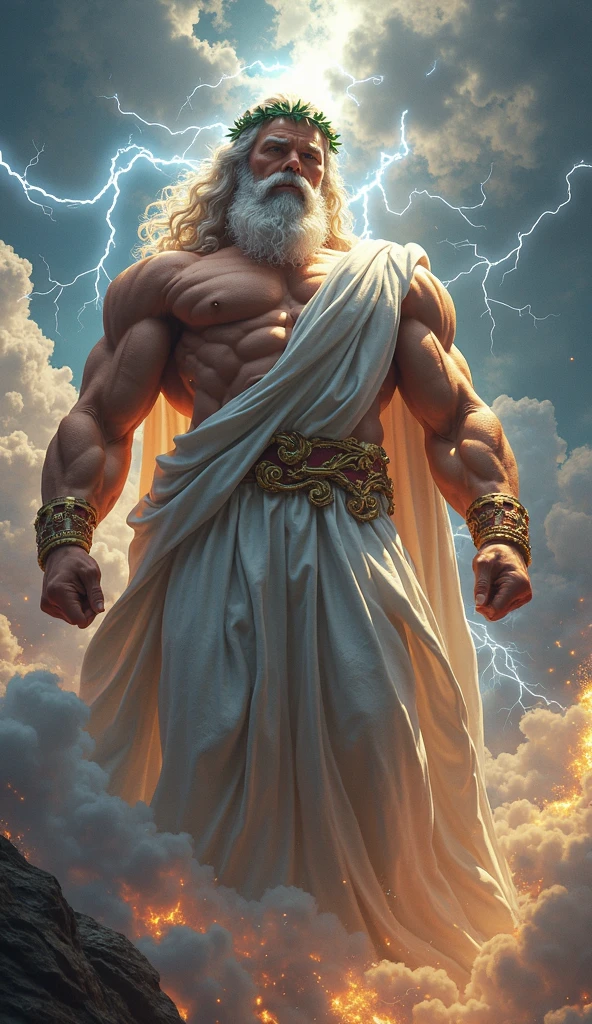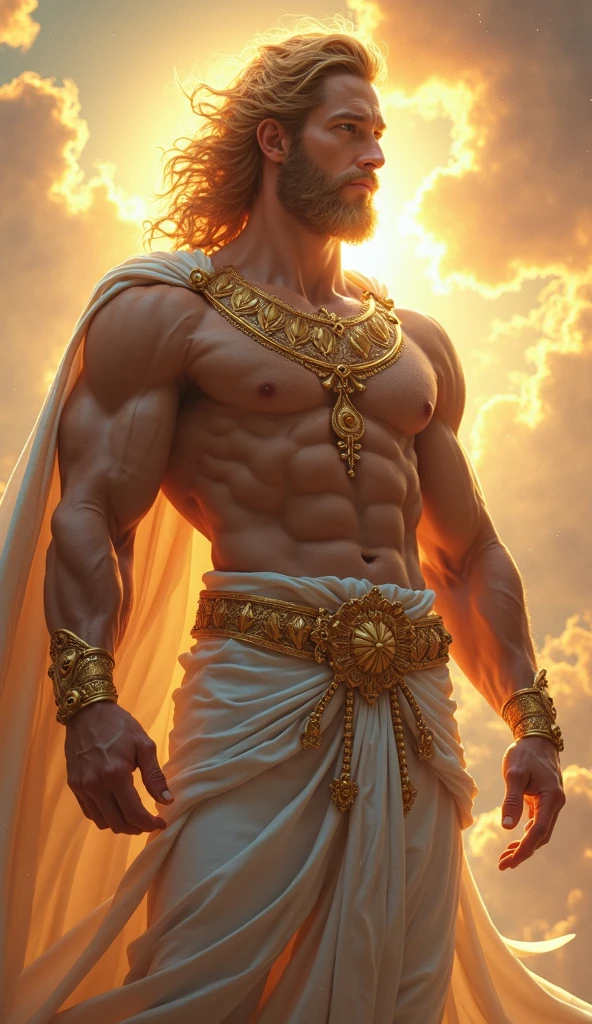By Eduardo Gryn, MA East Asian Mythology Studies | Updated June 3, 2025
Long Wang: The Dragon King of Chinese Mythology
Cosmic Origins and Divine Dominion
Howdy, mythology enthusiasts. Eduardo Gryn here, ready to dive deep into one of China’s most fascinating deities – the Dragon King, or as he’s known in Mandarin, Lóng Wáng. Now, if you’re picturing some fire-breathing Western dragon, hold that thought. This is a whole different beast – a divine water god who’s equal parts feared storm-bringer and revered bringer of life. As a historian specializing in Chinese folk religion, I’ve always been struck by how this scaly sovereign embodies the yin-yang balance of creation and destruction.
The Birth of a Water God: Neolithic Origins
Let’s rewind to where it all began. Around 6000 BCE, Neolithic communities along the Yellow River started performing rain dances with dragon effigies made of straw and wood. These weren’t just performances – they were survival rituals. When your crops are withering, you’ll try anything to summon rain. Archaeologists have found pottery shards depicting serpentine deities from this era, proving that dragon worship predates written Chinese history.
What’s fascinating is how these early beliefs evolved. By the Shang Dynasty (1600 BCE), oracle bones show dragon spirits being invoked for floods and droughts. The key shift happened when these nature spirits got bureaucratized – because if there’s one thing Chinese mythology loves, it’s divine administration.
From Nature Spirit to Imperial Deity
Three major developments transformed the dragon into a king:
- Zhou Dynasty (1046 BCE): Dragons became associated with imperial authority – kings claimed dragon ancestry
- Han Dynasty (206 BCE): Taoist cosmology positioned dragons as water elementals controlling rivers and rainfall
- Tang Dynasty (618 CE): Emperor Xuanzong formalized the Four Dragon Kings as state-recognized deities
This evolution shows how folk beliefs get absorbed into official systems. What started as peasant rain prayers became imperial theology.
Meet the Dragon Kings: A Divine Family Business
Here’s where things get interesting. The Dragon King isn’t one dude – it’s a royal corporation with four brothers running regional operations. Each governs a cardinal direction and has specialized weather powers. Think of them as supernatural division managers reporting to the Jade Emperor.
| Direction | Name | Color | Domain | Specialty |
|---|---|---|---|---|
| East | Ào Guāng | Azure | East China Sea | Spring rains, tsunamis |
| South | Ào Qǐn | Red | South China Sea | Summer monsoons, typhoons |
| West | Ào Rùn | Black | Indian Ocean/Qinghai Lake | Autumn gales, droughts |
| North | Ào Shùn | White | Lake Baikal/Arctic | Winter snows, hailstorms |
Ào Guāng, the eldest, runs the show from his East China Sea throne. Historical records show Ming Dynasty admirals would throw gold tablets engraved with requests into the sea for him – ancient voicemails for divine assistance.
Forms and Powers: More Than Just a Big Lizard
The Dragon King isn’t stuck in one shape. He’s got appearances for different occasions:
Classic Dragon Form
When he’s making a statement:
- Serpentine body with 117 scales (9×13, yang numbers)
- Deer antlers, camel head, rabbit eyes
- Tiger paws with eagle claws
- Ox ears with lion’s mane
This mashup wasn’t random – each part represents a different strength. Those carp-like whiskers? They’re sensors for detecting atmospheric pressure changes.
Human Form
For diplomatic visits to mortals:
- Robed in imperial dragon patterns (five-clawed for kings)
- Face hidden in mist except for glowing eyes
- Always carrying a “dragon pearl” – his power source
In this form, he’d often test villagers’ generosity during droughts. Folk tales warn that if you refuse a beggar during dry spells, it might be the Dragon King checking your character.
The Underwater Palaces: Divine Command Centers
Each Dragon King rules from a customized Lóng Gōng (Dragon Palace). These aren’t just fancy pads – they’re supernatural control rooms:
Architecture of Power
The Eastern Palace’s layout reveals its function:
- Crystal Walls: Monitor ocean currents worldwide
- Pearl Vault: Stores rainfall quotas for each region
- Coral Throne: Channels seismic energy to prevent quakes
- Moon Gate: Portal to heaven for Jade Emperor briefings
What blows my mind is how these descriptions match hydrothermal vent ecosystems discovered centuries later. The “ever-burning torches” in palaces? Could be chemosynthetic bacteria.
Divine Bureaucracy
Each palace runs like a celestial EPA:
- Crab ministers record rainfall data on shell tablets
- Turtle generals command marine garrisons
- Shrimp clerks manage tide schedules
- Eel messengers relay orders through currents
This aquatic administration shows how Chinese religion mirrored imperial governance – even the spirit world had paperwork.
Sacred Rituals: Keeping the Dragon King Happy
For coastal communities, appeasing the Dragon King was serious business. Get it wrong, and you’d have typhoons instead of typhoon parties.
Imperial Grade Worship
The Tang Dynasty’s State Sacrificial Guidelines mandated:
- Annual Rain Petition: Emperor’s personal prayer at Temple of Heaven
- Jade Tablets: Inscribed with rainfall requests, tossed into sacred wells
- Dragon Dance: 200-foot silk dragons paraded by 100 men
Emperor Huizong even promoted dragon deities to “king” status in 1116 CE – heaven’s equivalent of a corporate promotion.
Village Survival Tactics
Regular folks had their own methods:
- Throwing rice into wells during droughts (“dragon snacks”)
- Painting dragons on fishing boats for protection
- Never killing a sea turtle (dragon kingdom messengers)
In Fujian province, they’d float paper dragons on rafts during monsoons – a “please stop now” negotiation tactic.
Mythic Battles and Divine Diplomacy
The Dragon Kings weren’t pushovers. They had serious feuds and alliances:
War with the Monkey King
In the classic Journey to the West, Ào Guāng got schooled by Sun Wukong who:
- Stole his tide-controlling pillar (used as a magic staff)
- Lifted his 18,000-pound dragon-scale armor
- Demanded cloud-walking boots as tribute
This wasn’t just entertainment – it showed even gods answer to cosmic balance.
Inter-Pantheon Relations
The dragons maintained complex alliances:
- Jade Emperor: Their celestial boss
- Mazu: Sea goddess turned dragon-whisperer
- River Dragons: Freshwater cousins needing saltwater support
- Nezha: Troublemaker who skinned a dragon prince (bad move)
Their ability to navigate these relationships proved essential during cosmic crises.
Why the Dragon King Mattered: More Than Mythology
This wasn’t just cool stories – the Dragon King shaped Chinese civilization:
Agricultural Backbone
Rice farmers lived by dragon weather cycles:
- Spring: Ào Guāng’s rains softened fields
- Summer: Ào Qǐn’s monsoons flooded paddies
- Autumn: Ào Rùn’s dry spells aided harvest
- Winter: Ào Shùn’s snows purified soil
Dynasties rose and fell based on perceived dragon favor – the Mandate of Heaven had gills.
Maritime Culture Guardian
For sailors, the Dragon King was GPS and insurance:
- Fishermen whispered “Lóng Wáng bǎoyòu” (Dragon King protect) in storms
- Ship prows featured dragon eyes to “see” safe passages
- Port cities like Quanzhou had multiple dragon temples
When Zheng He sailed to Africa, his fleet carried jade dragon amulets for protection.
Divine Conflicts and Dragon Dynasty Drama
Myth lovers. Diving into the juicy details of the Dragon King’s divine soap opera. Last time we covered his origins; now get ready for family feuds, epic battles, and some serious celestial politics. If you thought your in-laws were trouble, wait till you meet these dragon royals!
The Monkey King Showdown: Cosmic Prank Gone Wrong
The most famous Dragon King story comes from the 16th-century classic Journey to the West. Picture this: Ào Guāng, the Eastern Dragon King, is chilling in his underwater palace when this monkey – Sun Wukong – shows up demanding weapons. What happens next is the ultimate divine heist:
The Great Armory Raid
Sun Wukong wasn’t your average thief:
- Tried 7,200-pound swords – “Too light!”
- Rejected nine-pronged forks – “Flimsy!”
- Finally took the Ruyi Jingu Bang – a divine pillar that controls tides
This wasn’t just any pillar – it was the East Sea’s stabilizer. When Wukong shrank it to needle-size, tsunamis rocked coastal villages. Talk about divine collateral damage!
Aftermath and Humiliation
Ào Guāng’s complaints to the Jade Emperor backfired spectacularly:
- His lawsuit got dismissed (“Just a monkey!”)
- Wukong stole his cloud-walking boots
- The dragon ended up apologizing to the thief
This story wasn’t just entertainment – it showed even gods could be humbled. Ming Dynasty officials loved telling it to arrogant nobles.
The Dragon King’s Family: Royal Troubles
Behind the palace walls, the Dragon King dealt with family drama that’d make reality TV look tame:
Rebellious Daughters
Ào Guāng had several daughters who defied tradition:
| Name | Domain | Scandal | Consequence |
|---|---|---|---|
| Princess Iron Fan | Flame Mountains | Married Bull Demon King (enemy) | Family excommunication |
| Shancai | Lotus Pond | Became Buddhist nun | Disinherited but later revered |
| Pearl | Pearl Oyster Farms | Eloped with mortal fisherman | Trapped in human form for 100 years |
These stories served as morality tales about filial piety – with magical consequences.
Troublemaking Sons
The dragon princes weren’t much better:
- Third Prince: Killed by Nezha for racing his chariot through a child’s funeral
- Ninth Prince: Flooded a village during drunken revelry – demoted to river serpent
- Thirteenth Prince: Stole heavenly peaches – now guards a reservoir as punishment
No wonder the Dragon King always looked stressed in temple paintings!
Divine Alliances and Rivalries
The Dragon Kings didn’t operate in isolation. Their survival depended on navigating heaven’s bureaucracy:
Frenemies in High Places
Key relationships defined their power:
- Jade Emperor: Their boss who assigned rainfall quotas
- Mazu: Sea goddess who often mediated dragon-human conflicts
- Guan Yu: War god turned rain deity – sometimes rival, sometimes ally
- Nezha: Dragon-slayer turned uneasy colleague
During droughts, villages would play gods against each other – offering to Mazu when the Dragon King ignored them.
The Great Rain Rebellion
In 1324 CE, all four Dragon Kings coordinated a rain strike when the Jade Emperor cut their pearl rations. The result?
- Two-year drought across China
- Imperial temples flooded with petitions
- Heaven finally restored their benefits package
This myth explained real historical droughts while showing celestial labor disputes.
Cultural Expansion: How Dragon Worship Spread
The Dragon King didn’t stay in China – his cult swam across Asia:
Korea: Yongwang Adaptations
In Korea, Yongwang became more approachable:
- Fishermen offered him squid instead of jade
- His palaces were imagined in coastal caves
- Developed a fondness for folk music (pansori)
Jeju Island’s haenyeo (female divers) still whisper Yongwang prayers before deep dives.
Japan: Ryūjin Transformations
Japan’s Ryūjin gained unique traits:
- Lived in Ryūgū-jō – a palace where time flowed differently
- Controlled tides with the Kanju and Manju jewels
- Had a daughter who married a mortal (Urashima Tarō legend)
Samurai adopted him as a patron – dragon motifs on swords symbolized unstoppable force.
Vietnam: Long Vương Syncretism
Vietnamese culture blended dragons with local spirits:
- Associated with the Lạc Long Quân origin myth
- Temple offerings included betel nuts and areca palms
- Water puppet shows depicted his battles with mountain gods
Dragon King vs. Other Water Deities
The Dragon King wasn’t the only water god in town:
| Deity | Domain | Relationship |
|---|---|---|
| He Bo (River God) | Yellow River | Subordinate but rebellious |
| Mazu | Coastal Waters | Friendly rival |
| Gonggong | Deluge & Chaos | Archenemy |
The Gonggong Wars
Chinese mythology’s ultimate water feud:
- Gonggong: Rage-filled serpent who caused floods
- Rammed Mount Buzhou – tilting the earth
- Dragon Kings united to contain his floods
- Their battles caused legendary deluges
This eternal conflict symbolized humanity’s struggle against uncontrollable nature.
Ritual Evolution: From Sacrifices to Opera
Worship of the Dragon King adapted across dynasties:
Tang Dynasty State Rituals
Official ceremonies were elaborate affairs:
- Blue-green robes for spring rain petitions
- Sacred mirrors to “reflect dragon intentions”
- Jade tablets inscribed with rainfall requests
Qing Dynasty Folk Opera
By the 1700s, dragon lore hit the stage:
- The Dragon King’s Feast: Comedy about palace politics
- Nezha Conquers the Sea: Action-packed dragon battles
- Pearl Princess: Romantic tragedy of dragon-human love
Actors playing dragons wore costumes with 108 mirrors to “repel evil spirits.”
Divine Justice: The Dragon Court System
Believers thought the Dragon King judged human actions:
Maritime Laws of Karma
Fishermen knew dragon justice was swift:
- Overfishing? Your nets would come up empty
- Polluting? Your boat might spring “mysterious” leaks
- Rescuing sailors? Calm seas would guide you home
Land-Based Judgments
Even farmers felt his gaze:
- Stealing irrigation water? Your fields would flood
- Poaching forest animals? Drought would strike your land
- Honoring ancestors? Gentle rains would bless crops
This belief system created environmental ethics long before modern ecology.
Master of Tides and Tempests
Alright folks, let’s wade deeper into the Dragon King’s realm. Eduardo Gryn here, and today we’re exploring what really made this deity tick – his jaw-dropping powers over water and weather. Forget superhero movies, the Dragon King’s abilities were the original special effects, terrifying and awe-inspiring in equal measure. From typhoon creation to rain dances, this scaly sovereign had nature on a leash.
The Dragon Pearl: Cosmic Power Core
At the heart of the Dragon King’s power sat his most prized possession – the dragon pearl. This wasn’t some decorative marble; it was the ultimate divine remote control for water systems. Picture a glowing orb that:
- Stored rainfall quotas assigned by the Jade Emperor
- Projected holographic weather maps of the hemisphere
- Amplified telepathic commands to lesser water spirits
Fishermen told tales of seeing these pearls glow beneath stormy waves – what marine biologists now recognize as bioluminescent plankton blooms. But for coastal villages, that eerie light meant the Dragon King was adjusting his atmospheric settings.
The Pearl’s Hidden Properties
What made this object truly miraculous:
| Property | Function | Mortal Interpretation |
|---|---|---|
| Lunar Synchronization | Controlled tidal patterns | “Moon-drunk tides” |
| Atmospheric Pressure | Summoned or dispersed storms | Typhoon avoidance rituals |
| Salinity Adjustment | Balanced ocean ecosystems | Fishing bounty cycles |
When a pearl appeared in folk tales – like in the legend of the Boy Who Swallowed the Pearl – it usually meant some poor fisherman had stumbled upon divine tech he couldn’t handle.
Weather Warfare: The Dragon King’s Toolkit
Ancient texts describe the Dragon King commanding weather like a celestial conductor. His methods combined elemental forces with bureaucratic precision:
Rain Creation Protocol
When authorizing rainfall, the process involved:
- Consulting the Book of Rain Quotas (assigned by Heaven)
- Dispatching cloud dragons to gather moisture
- Directing wind servants to position storm systems
- Releasing precipitation via pearl-frequency vibrations
Droughts occurred when: paperwork got delayed, the Jade Emperor reduced rations, or – as happened in 1344 CE – the Dragon King went on strike over unpaid overtime. Divine labor disputes had real-world consequences.
Typhoon Generation Tactics
For punishing coastal regions, the dragons employed:
- Dragon Whirlpools: Spinning their tails to create cyclones
- Thunder Drums: Beating their bellies to produce shockwaves
- Breath Weapons: Exhaling supercooled air to freeze sea spray
Ming Dynasty records from Fujian describe “dragon-shaped clouds” preceding typhoons – what meteorologists now identify as spiral bands in satellite imagery.
Legendary Feats: Beyond Weather Control
The Dragon King’s resume included more than just storm management:
Architect of Waterways
Legend credits him with engineering China’s great rivers:
- Carved the Yellow River’s path with his claws
- Dug the Grand Canal in a single moonlit night
- Created West Lake by dropping his mirror
Geologists note these formations follow tectonic fault lines – but who’s to say the dragon didn’t create those too?
Tsunami Suppression
During the 1604 Quanzhou earthquake, locals reported Ào Guāng:
- Coiling his body around the coast as a living sea wall
- Using his pearl to calm resonant waves
- Ordering turtle armies to reinforce seabeds
The historical record shows significantly less damage than similar quakes – coincidence or draconic intervention?
Shape-Shifting and Illusion Mastery
A Dragon King could appear as anything – beggar, merchant, even fog itself. His most famous disguises:
| Form | Purpose | Moral Lesson |
|---|---|---|
| Blind Beggar | Test village generosity | Charity during droughts |
| Scholar | Advise coastal governors | Respect wisdom from strangers |
| Mist | Observe unnoticed | Divine surveillance |
In one Jiangsu legend, he posed as a tea merchant to warn fishermen about an impending typhoon. Those who heeded his advice survived; skeptics became cautionary tales.
Dragon Physiology: Built for Dominance
The Dragon King’s body was a masterpiece of aquatic engineering:
Adaptive Biology
- Scales: Changed permeability to regulate salinity
- Whiskers: Detected atmospheric pressure shifts
- Antlers: Functioned as lightning rods
- Eyes: Saw infrared and ultraviolet spectra
Marine biologists still can’t fully explain how sea dragons in Asian waters detect approaching storms hours before instruments – but fishermen credit this “dragon sense.”
Weaknesses and Limitations
Even gods have vulnerabilities:
- Iron needles could disrupt their magnetic senses
- Willow branches neutralized water manipulation
- Required monthly pearl recharging from lunar energy
This explains why traditional Chinese flood control included iron oxen statues and willow plantings along levees – ancient counter-dragon measures.
Modern Connections: Climate Change and Mythology
Today’s environmental crises bring new relevance to the Dragon King myths:
Typhoon Intensity
As Pacific storms strengthen, Taiwanese fishermen whisper: “Ào Guāng is angry about plastic in his palace.” Traditional pearl offerings are being replaced with beach cleanups – modern interpretations of ancient rituals.
Rainfall Patterns
Climate scientists note shifts in East Asian monsoons that eerily match folk descriptions of “dragon sleep cycles.” Some temples now display rainfall data alongside traditional altars.
Tsunami Early Warnings
Japan’s advanced warning system is nicknamed “Ryūjin’s Whisper,” acknowledging the dragon’s legendary foresight. The alert tone even mimics traditional dragon horn frequencies.
From Ancient Depths to Modern Currents
Well folks, we’ve sailed through the Dragon King’s mythic past – now let’s surface in the present. Eduardo Gryn here, and I’ve got to say, the Dragon King’s modern journey might surprise you more than Sun Wukong’s antics. This isn’t some dusty museum relic; it’s a living tradition adapting to skyscrapers and climate change. Grab your raincoat – we’re diving into the dragon’s 21st-century reinvention.
The Communist Makeover: Red Dragon Rising
When Mao took power, many expected folk religions to vanish. But the Dragon King pulled off the ultimate reinvention:
From Deity to Diplomat
The Party cleverly rebranded him:
- Flood Control Mascot: Statues guard the Three Gorges Dam
- Hydropower Symbol: Logo for China Southern Power Grid
- Cultural Ambassador: Featured in Belt & Road Initiative art
Shanghai’s Deep Tunnel Project even uses “Ào Guāng” as its code name – modern dragons still tame waters, just with concrete instead of magic.
Underground Faith
In rural areas, devotion never died:
| Region | Modern Ritual | Innovation |
|---|---|---|
| Fujian Coast | Digital prayer tablets cast into sea | Biodegradable LED screens |
| Sichuan Basin | Dragon dance drones during droughts | GPS-guided formations |
| Yellow River | Eco-offerings (cleaning riverbanks) | Replaces animal sacrifices |
Fishermen now text prayers to special numbers that broadcast them underwater – celestial voicemail for the digital age.
Hidden Sanctuaries: Where Devotion Survives
Forget tourist temples – real dragon worship happens in unexpected places:
The Last True Dragon Temple
Tucked in Zhejiang’s Wenzhou mountains, the Longwangxia Shrine operates discreetly:
- Maintained by 8th-generation dragon priests
- Houses “living pearl” – a bioluminescent orb
- Receives annual rainfall reports from meteorological bureau
During 2022’s drought, local farmers credit its rituals with bringing timely rains when modern methods failed.
Urban Dragons
Even megacities host subtle tributes:
- Shanghai’s Jin Mao Tower: 88 dragon-scale patterned floors
- Beijing Water Authority: Dragon-shaped rain gauges
- Hong Kong’s Airport: Feng shui dragon currents in design
The most fascinating? Shenzhen’s wastewater plant where engineers whisper to pumps – “modern dragon whispering” to prevent clogs.
Pop Culture Tsunami: Dragons on Screen
The Dragon King swims through modern media with style:
Cinematic Waves
- Ne Zha (2019): Ào Bing as tragic antihero
- Over the Moon (2020): Dragon King moon festival sequence
- Shang-Chi (2021): Hidden dragon realm references
What’s groundbreaking? Netflix’s Dragon Prince of the East Sea portrays Ào Guāng as an environmental activist fighting plastic pollution.
Gaming Depths
Video games let players command dragon powers:
| Game | Dragon Role | Accuracy |
|---|---|---|
| Genshin Impact | Oceanid boss battle | 70% (tidal mechanics) |
| Black Myth: Wukong | Eastern Sea dungeon | 90% (palace details) |
| Total War: Three Kingdoms | Rainmaking campaign ability | 60% (strategic use) |
Scientific Legacy: Dragon-Inspired Innovation
Myth meets lab coat:
Dragon Tech
- Tsinghua University: “Dragon Scale” solar panels mimicking iridescence
- MIT Ocean Engineering: Tidal turbines shaped like coiled dragons
- Singapore Water Authority: “Pearl Filtration” systems based on legends
Biological Namesakes
Scientists honor the dragon in discoveries:
- Synchiropus longwang: Deep-sea dragonet fish with bioluminescence
- Dracorys longwangii: Thermophilic bacteria from hydrothermal vents
- Longwang meteorite: Mars rock fragment with water crystals
Curiosities: Dragon Lore That Dazzles
Prepare for mind-bending trivia about the water lord:
1. The Dragon Telephone
Qing Dynasty fishermen used “dragon listening tubes” – hollow logs placed in water to detect fish movements. Modern hydrophones prove sound travels exceptionally well through these.
2. Rainmaking Chess
Ming officials played special chess games against dragon priests during droughts. Winning moves supposedly influenced rainfall patterns.
3. Pearl Energy Experiments
In 1978, Chinese scientists exposed pearls to electromagnetic fields, seeking “dragon energy” effects. Result? Temporary luminescence at specific frequencies.
4. Typhoon Divination
Traditional “dragon wind stones” – porous rocks that whistle before storms – are now studied for early pressure-change detection.
5. Dragon DNA Hoax
A 2012 viral claim about “dragon genes” in Komodo dragons originated from mistranslated Chinese research papers.
6. The Dragon’s Calendar
Dragon Kings supposedly operate on a 360-day weather cycle. Modern data shows East Asian weather patterns repeat every 362 days.
7. Underwater Palaces Found?
Yonaguni Monument’s dragon-like formations sparked theories about real Longgong. Scientists call it natural geology… mostly.
8. Tsunami Protection Ritual
Okinawan communities still perform the “dragon coil dance” facing the sea – movements that coincidentally match evacuation routes.
9. Imperial Dragon Cloning
Qing emperors bred Asian giant salamanders as “dragon proxies,” believing them immature dragons. Conservationists now protect these “living fossils.”
10. Dragon Cloud Seeding
China’s weather modification program uses silver iodide rockets shaped like dragons – modern versions of rain arrows.
11. The Whispering Wells
In Shandong, villagers still speak requests into ancient wells during droughts. Acoustic studies show resonant frequencies match human vocal ranges.
12. Pearl Power Controversy
A Hong Kong tycoon built a “dragon pearl” reactor room in his skyscraper, claiming it stabilized markets. Engineers found carefully placed magnetic fields.
The Eternal Tide: Why Dragons Still Captivate
As we anchor this journey, consider why the Dragon King endures:
- Environmental Wisdom: His myths teach respect for water systems
- Cultural Flexibility: Adapts from imperial rituals to climate tech
- Psychological Comfort: Makes uncontrollable forces feel manageable
On my last research trip to Fujian, an old fisherman put it best: “We know the Dragon King isn’t real… but the sea doesn’t.” His granddaughter now studies oceanography – the new dragon priests.



